Experience Nepal's diverse culture, history, and breathtaking natural beauty. Kathmandu showcases the mingling of religions and cultures through ancient temples, stupas, and museums, preserving a rich heritage spanning over two thousand years.
Trip Highlight
- Visit UNESCO world heritage sites.
- Sunrise view from Nagarkot.
- Insightful historical and cultural tour.
- Natural landscape & Himalayan range of Nepal.
If you're keen on discovering the history and culture of Nepal and observing how they progressed over different periods, while also experiencing the breathtaking natural beauty of the country, but you have a limited amount of time, then this package may be the perfect option for you.
Nepal is a multi-ethnic, multilingual, multi-cultural and a multi-religious country. It is a home of two major religion i.e. Buddhism and Hinduism as well as other small religious segments such as: Bon & Kirat. Kathmandu as a capital city, to some extent, represents such diverse characters of Nepalese society. The history, culture, religion and architecture of Kathmandu valley is the history of mingling & molding of diverse cultural & religious practices which were emerged, developed & practiced in different parts of the country, then used to be called Himavatkhand. Intangible cultural aspects still living through the lives of people residing in Kathmandu Valley which can be witnessed during the tour while tangible cultural aspects are & have been preserved in monuments, temples, stupas, monasteries & museums. Since the meaning of Kathmandu refers to the city of wooden temples (Kath-wood, mandu-temple) each and every corner of the city are encountered with such heritage in the form of stupa, temple, monastery, pati etc... The major seven sites of them are now called world heritage sites which present a magnificent art & architecture of medieval period which were built hundred to seven hundred years ago. Inscriptions, statues, geneology and Hitis (water spouts) are a living evidence that give a clear picture of history of more than two thousand years old.
The valley is described as "an enormous treasure house of art and sculptures", which are made of wood, stone, metal, and terracotta, and found in profusion in temples, shrines, stupas, gumbas, chaityas, and palaces. The art objects are also seen in street corners, lanes, private courtyards, and in open ground. It is also the home to a number of museums and art galleries, including the National Museum of Nepal. Most of the fairs and festivals in Kathmandu originated in the Malla period or earlier. Traditionally, these festivals were celebrated by Newars. Kathmandu is the city that is the gateway to the Nepalese Himalayas.
You will visit the city’s most well-known attractions: Swayambhunath Temple, which is the oldest Buddhist shrine and the best place to observe religious harmony between Nepalese Buddhists and Hindus; Pashupatinath Temple, an ultimate pilgrimage for Hindu throughout the world. Morning you will travel to the Swoyambunath stupa, also called a monkey temple, that offers spectacular views of Kathmandu valley and surrounding areas. You will spend about an hour there. Afterwards, head back down the hill with a vehicle for a tour to Pasupatinath Temple, one of the oldest & sacred Hindu shrines signifies Lord Shiva and a cremation center of KTM Valley. Next spot is Bouddhanath Stupa, one of the biggest Stupa around the world & the best place to observe the Tibetan people's lifestyle. We will explore fascinating stories, the monasteries, biggest stupas, and surrounding areas of Boudhanath. Similarly, Patan Durbar is the city of fine arts has hundreds of fascinating Hindu and Buddhist monuments back to the medieval Malla period. Bhaktapur Durbar Square is a unique old town built in the shape of a conch shell, the city of devotees. Changunarayan is the oldest temple in Nepal has a distinct historical and architectural significance. The authentic and oldest ever inscription is located in the precinct of Changu Narayan. Along with the historical & cultural sites of our 3 days trip, excursion to Nagarkot, a popular hill resort area famous for sunrise view in the Himalayas, situated 20 miles (32km) northeast of Kathmandu at an elevation of 2,195m. Nepal historical & cultural tour will be your life-changing trip if you love to observe the culture of Buddhism and Hinduism.
Show more...Places Visited:
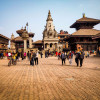
Kathmandu
kathmandu, Nepal
Activities:
Flying into Kathmandu is a memorable experience with the view of Himalaya spreadings. The flight will land at (TIA) Tribhuwan International Airport at 1350m after you will receive Nepal entry visa which can be obtained in advance or on arrival and for the visa processing at TIA might take around 45min. depending on the number of people in a queue. For the Nepal entry visa information, kindly refer to Nepal government official site Department of Immigration Nepal. After you exit from the gate, you will see our company’s representative waiting for you holding placard written with the company name & logo. Company representative welcomes you by offering the holy Tibetan scarf and transfer to the hotel in a private vehicle. It takes around 30min to reach at Thamel from TIA via means of transportation. The scenes of Pashupatinath(sacred Hindu temple), city, full of various vehicles, peoples make our journey more enjoyable and amazing, then we reach the hotel and take rest. Thamel is full of restaurants, shopping centers, and good accommodation. Trip briefing and afterward invited to welcome dinner. Overnight stay at Hotel.
Show more...Places Visited:
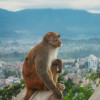
Swayambhunath
kathmandu, Nepal
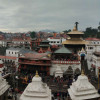
Pashupatinath
kathmandu
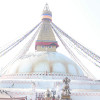
Bouddha Stupa
kathmandu
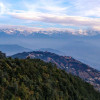
Nagarkot
Bhaktapur, Nepal
Activities:
The sightseeing program will start from Swoyambhunath Stupa, most ancient and enigmatic of all the holy shrines in Kathmandu valley.
Swoyambhunath Stupa (Monkey Temple)
- holiest Buddhist stupas in Nepal
- World Heritage Sites
- Literally meaning "self- created"
- Praised and meditated by many Buddhas: Shikhi, krakuchhand, kanakmuni, Shakyamuni, Manjushri
- Excellent view of the Kathmandu valley The distance is about 3.9km from Thamel takes around 15min in private vehicles.
Swayambhu has been listed in the World Heritage Sites. The entire valley was an enormous lake, nagdah, out of which grew a lotus with five colored flame (self-arisen). Lotus was transformed into a hill and the flower became the stupa. It is still believed that the self-arisen flame is covered with dome of Stupa. The place is known as Swayambhu, meaning "Self-Created" over which a stupa was later built. Swayambhu is among the oldest religious sites in Nepal known as 'monkey temple' because of the large tribe of roaming monkeys. Located at one of the highest elevations in Kathmandu Valley gives panoramic views of the city. The place is praised by Buddha and meditated by several Buddha's as a pure holy site. We'll see three enormous shining golden statues of Sakyamuni Buddha, a four-armed Chenresig and Guru Rinpoche, built-in 2003. The site has two access points: a long staircase contains 365 steps leading directly to the main platform of the temple and vehicle road around the hill from the south leading to the south-west entrance. The first sight on reaching the top of the stairway is the enormous Vajra. The first earthly element facing the stupa on left is a small building contains one of the five elements placed in cardinal points around Swayambhunath. There are many small shrines with statues of Tantric and shamanistic deities, prayer wheels for the Tibetan Buddhists. The stupa represents Buddha’s mind. It offers peace, freedom, and joy and ultimately helps to obtain perfect enlightenment. Huge prayer wheels and fine Buddhist paintings are displayed in the monasteries, as well as the largest Buddha statue in the country. The stupa consists of a dome at the base; above the dome, there is a cubic structure with the eyes of Buddha looking out over the valley. The stupa has stood as a hallmark of faith and harmony for centuries with Hindu temples and deities incorporated in this Buddhist site. Visitors walk around the stupa and recite mantras, make offerings, turn prayer-wheels and make wishes for the benefit of all beings. Near the stupa left at the corner is a small red brick building has Swayambhu Buddhist museum. There is a collection of Buddhist statues and items. Hariti Temple (Ajima Temple) is a two-tiered gilded Newari style temple. Harati is the Buddhist goddess for the protection of children against infectious diseases, protectress deity of Swayambhu, and the deity of wealth.
Pashupatinath Temple
- Most sacred Hindu temple
- Famous for the shrine of lord shiva
- Two-storied pagoda temple
Pashupatinath Temple is one of the most sacred Hindu temples of Nepal located at the banks of holy Bagmati River. Every year this temple attracts hundreds of elderly followers of Hinduism. The place for different festival like Maha Shivaratri and Teej where thousands of devotees celebrate. The temple is the ultimate pilgrimage for Hindus throughout the world. The area is swarmed in by the Hindus from different part of the country. The two-storied pagoda temple of Pashupathinath houses the five-faced statue of Lord Shiva. Apart from the main shrine, there are numerous temples dedicated to different god and goddess in and around the Pashupatinath temple area. This temple is an important destination for art historians. It displays a variety of temple design some of which are Dome style, Pagoda style, Shikhara style and so on. Additionally, there are varieties of statues and sculptures around the complex. There are statues made of stone, metal, and wood. The door and pillars around the temple area are carved in beautiful shapes of God and griffins. The temple is built in the pagoda style of architecture, with cubic constructions and carved wooden rafters on which they rest, and two-level roofs made of copper and gold. After we continue to Boudhanath Stupa which is 2.3km from here takes around 15min to reach.
Boudha Stupa
- The largest stupa in the world
- Most sacred Tibetan Buddhist site
- The ancient trade route from Tibet
- The woman built the stupa and was completed by her four sons
- Stupa contains a relic of Kashyap Buddha On the rooftop restaurant and enjoy the calm and peaceful ambience with a cup of coffee.
Bouddha stupa is the largest and most sacred Tibetan Buddhist site outside of Tibet forming a religion and culture hub for the Tibetan and people from the Himalayas of Nepal. The Stupa was on the ancient trade route from Tibet. The Stupa is claimed to have the relic of Kasyapa Buddha, the third Buddha of the Bhadrakalpa. Boudha Stupa, a UNESCO World Heritage Site significant for its historic and architectural significance, with sprouting monasteries and craftsmanship. It is said that the stupa is built by the mother Jyajhima, a poultry woman. She was very poor, despite her poverty she had an intense desire for building a stupa. The mother passed away after she completed up to the vase, the dome-like structure. She had four sons, and the construction of the rest of the Stupa was completed by four sons. After they finished it, they all stood up in front of it and made prayers. Everyone made their wishes. When they were praying, all the buddhas and bodhisattvas were absorbed into the stupa, which is why the name of the stupa is also “All-Encompassing.” The stupa is a semicircular white dome and the towering spire, with unblinking eyes painted on each side that stares into the four directions. The overall shape represents a Buddhist mandala (a cosmological map) and the path towards enlightenment, as well as the mythical center of the cosmos, Mount Meru. The four Dhyani Buddha signifies the crucial points, and the fifth, Vairocana is enshrined in the central white hemisphere of the stupa. The base of the stupa consists of three large platforms, decreasing in size. The square tower is topped by a pyramid with 13 steps, represents the stages that human beings must pass through to achieve nirvana. The triangular shape is the abstract for the elements of fire. Every portion has a symbolic significance: the base, dome, spire, and pinnacle represent the five elements. It is said that the stupa contains a piece of bone from the skeleton of Siddhartha Gautama, the historical Buddha. There are 108 images of Dhyani Buddha at the base of the stupa, accompanied by prayer wheels organized in a group of four or five in 147 different niches. The prayer flags tied on the stupa are believed to carry mantras and prayers towards heaven. The place is quiet and peaceful to find some spiritual connection with this place. Moreover, the sound of singing bowls and Buddhist chants, mixed with the smell of incense burning creates a kind of healing energy. The place allows visitors to delve into the lives of Buddhist monks and nuns who devote their lives to simplicity and non-violence. Boudhanath is the best place to learn about spirituality, meditation and the history of Buddhist philosophy, there is no other place like Boudhanath to visit. Early in the morning and evening time, Buddhist monks in maroon robes are seen circumambulating the stupa with prayer wheels on their hands. Small peripheral of the stupa is surrounded by the Thanka and rituals objects shop. The spot is favorable to explore both the culture and architectural sites. Numerous small stupas are located at the base.
Kathmandu Durbar Square
- Religious site
- Hanuman Dhoka Palace
After the visit of Boudha Stupa, we head to Kathmandu Durbar Square known by Hanuman Dhoka, Basantapur. The Royal Palaces used to be the house of kings of Shah and Malla Dynasty, who ruled over the city until the 19th-century. The palaces have since been turned into museums. It is the ancient royal residential quarter, Mahadev and Parvati Temple, Machhender Bahl - Holy place for the Buddhists and Hindus, Temple House of Kumari, the living goddess. The outer complex consists of numerous pagoda-style temples featuring the meticulously carved facades crafted by Newar artists, dating back to the 16th-century. Then we head toward Nagarkot to enjoy the magnificent sunset and sunrise views over the major peaks of eastern Nepal Himalayas including Mt Everest.
Show more...Places Visited:
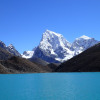
Changu Narayan
Bhaktapur, Nepal
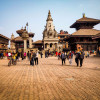
Bhaktapur Durbar Square
Bhaktapur, Nepal
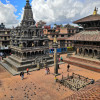
Patan Durbar Square
kathmandu
Activities:
Witnessing stunning sunrise view from Nagarkot, we will have our breakfast at Hotel & drive to Changu Narayan an ancient monumental Narayan Temple. Two storey pagoda-style temple dedicated to Lord Vishnu and surrounded by ancient carvings and statues. Having survived destruction in 1702 and 2015, it is said to be the oldest Hindu temple still in use in the Kathmand Valley today. Changu Narayan temple has a distinct historical and architectural significance. The authentic and oldest ever inscription is located in the precinct of Changu Narayan. The oldest inscription dated 464 AD is credited to have been set up by Lichchshavi King Mahadeva. The erection of Garuda Pillar by Manadeva is an expression of his devotion and reverence to Changu Narayan as learned from the inscription, points out that the temple of Changu Narayan was built sometime before 464 AD & is widely considered to be the oldest Hindu temple in Bhaktapur, and one of the oldest in Nepal. Built on top of a high hill about seven miles directly east of Kathmandu, the temple is dedicated to Vishnu, although shrines to Lord Shiva, Ashta Matrika, Chhinnamasta, Kileshwor, and Krishna are also found within the wider temple complex.
Bhaktapur Durbar Square
- City of Devotees
- Shape of conch shell Bhaktapur is 16 km far from Kathmandu known as Bhadgaon.
The meaning of Bhaktapur is the ‘City of Devotees’. Bhaktapur is the most picturesque town, streets paved with bricks, in herringbone and parquet patterns, artistic door and windows, Newar city dwellers, with no industrial zone, feels like a big village than a city. We visit four magnificent courtyards named – Dattatraya Square, Taumadhi Square, Pottery Square, and Durbar Square. Bhaktapur is said to have been built in the shape of a conch shell, a sacred symbol of Lord Vishnu. Before the unification of Nepal, Bhaktapur was an independent principality ruled by the Malla Kings, who were devoted to religion, culture, and art. During the period many magnificent temples and mansions were built. That period is remembered as the golden period in Nepalese art and remains a unique example. It has remained a model for heritage conservation since then. At the Bhaktapur Durbar Square, we will find many fine examples of sculpture, woodcarving, and pagodas dedicated to different gods and goddesses – the Nyatapol & Dattaraya Temples, Golden Gate, Palace of 55 windows, etc. Patan - City of fine arts -Three main courtyards It is one of the three medieval cities in Kathmandu and a destination of fine arts has hundreds of fascinating Hindu and Buddhist monuments scattered in and around. Patan City is an enchanting mixture of palace buildings, artistic courtyards, and former palace complex. Most of the monuments are back to the medieval Malla period 15th to 17th century as the golden period of Nepalese art and architecture. Krishna Mandir- a stone temple of Lord Krishna with its 21 spires and bas-relief art depicting scenes from the Mahabharata and Ramayana epics and surrounding Hindu and Buddhist temples. The main highlights are the Golden Gate and the Golden Window of the old Palace, the beautiful piece of traditional metal crafts, the famed Krishna temple with 21 golden pinnacles, the Royal bath of Sundari Chowk, a perfect piece of the classic work in stone, Royal Taleju temple, Vishwanath Temple and Char Narayan temple are the finest examples of the unique craftsmanship in wood; the temple of Bhimsen with the magnificent golden balcony overlooking the square outside plus many other shrines and sculptures scattered in and around the square. Here comes the wrap up for the day & you will be transferred to Hotel. Welcome to Nepalese cultural dinner with cultural performance in the evening.
Show more...Inclusions & Exclusions
Show more...- Airport pick up & drop off in private vehicle
- Three star category Hotel accommodation in Kathmandu with BB plan.
- All necessary paper works
- Neat & clean basic level accommodation with BLD plan during Trek
- All local taxes.
- All necessary ground transportation in a comfortable private vehicle
- Kathmandu valley sightseeing with professional English speaking Tour Guide
- Government registered Tour Guide throughout the trip
- Nepal entry visa fee & international airfare.
- Lunch & dinner while you are in Kathmandu.
- Hotel upgrade & any other add on.
- Extra stay in Kathmandu.
- Personal expenses: phone calls, internet, laundry, alcoholic beverages, soft drinks.
- Private & customized trip.
- Tip for guide & porter.
- Filming devices: camera, drone, permit fee.
- All those not included in the list of inclusions.
- Personal Travel Insurance
Similar Tours
Embrace Adventure: Elevate Your Travel Experience with Our Irresistible Tours!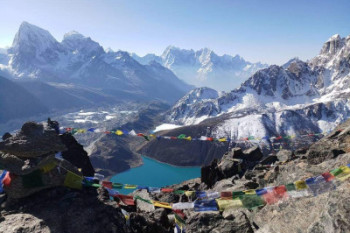
17 days | 16 nights
$ USD 1550
Everest Base Camp through Gokyo Lake
Embark on the iconic Everest Basecamp trek, experiencing the must-do adventure that captivates thousands annually....
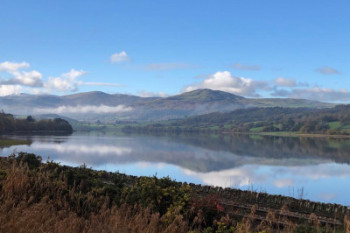
19 days | 18 nights
$ USD 1650
Annapurna Circuit Trek
Experience the allure of one of the world's iconic long-distance trekking trails, renowned for its breathtaking...
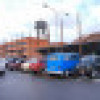
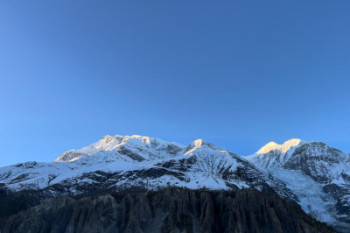
It was an amazing trip to Nagarkot and Kathmandu cultural visit with Suresh and Himalayan Walkers family. I hope to come again Nepal and do more explorations with this team. Thank you.
Show more...